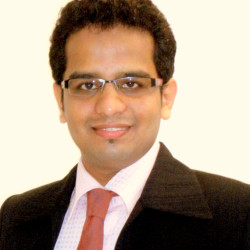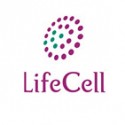Вы здесь
LifeCell Community Stem Cell Banking
 While the mother gives birth to the child, it is also true that the child gives birth to a mother by making her attain motherhood. The mother offers her blessings for the baby to be healthy for a lifetime. But did any of us know that the baby can bless the family with a lifetime of good health?
While the mother gives birth to the child, it is also true that the child gives birth to a mother by making her attain motherhood. The mother offers her blessings for the baby to be healthy for a lifetime. But did any of us know that the baby can bless the family with a lifetime of good health?
Yes! The umbilical cord which connects the mother and baby functions as a lifeline for the baby in the womb. In India, the umbilical cord is considered as ‘medical waste’ and is discarded immediately after birth. However, medical science considers this as a preferred source of stem cells.
Stem cells are precious master cells of our body with immense potential of treating several critical conditions such as Leukaemia, Thalassemia, Multiple Myeloma, Lymphoma, etc. and restoring normal life of the person. Over 500 clinical trials1 using stem cells are underway for treating conditions such as Stroke, Cerebral Palsy, Autism, Type 1 Diabetes, Hearing Loss, Heart Failure, etc.
A stem cell transplant is a procedure by which damaged, diseased or malfunctioning cells or tissues in the body are replaced or repaired by injecting healthy stem cells. Over the past 50 years, more than 1.3 million2 stem cell transplants have been performed worldwide.
The estimated individual risk of acquiring a blood or immune condition that may need treatment by stem cells transplant is 1 in 203-11. In 80% of these conditions, patients require treatment with stem cells from a suitable matching donor since they cannot use their own stem cells. Despite this large need, very few patients in India receive transplants, due to lack of matching stem cells for treatment and prohibitive costs in sourcing a stem cell unit.
To illustrate this point, it is important to highlight that the listed number of bone marrow stem cell donors in India is only 180,00012 which is less than 1% of the global donor base, despite India accounting for 20% of the world population. Another challenge with donors is that nearly 40-50%13 are either unavailable or refuse the donation at the time of request.
Public banks of stem cells from the umbilical cord blood are an alternative to adult donors. However, the inventory held by public cord blood banks in India is only about 500014 units, which is <1% of global inventory. This would not suffice since a minimum inventory of over 2.5 lakhs of Indian origin samples is recommended for finding a suitable ethnic match15 (1 Lakh = 100,000)
Families have resorted to protecting their future stem cell needs by preserving their baby’s umbilical cord stem cells at private banks. However, this may not be a complete solution since only 20%7-11 of the conditions that are treatable by stem cells can use the baby’s own stem cells. It is estimated that over 4 lakh cord blood units have been stored so far in India for private use with an annual storage rate of around 1 lakh units.
The ideal solution to this challenge is to have a new approach to umbilical cord blood banking that can be beneficial to the child, its family and also to a larger community.
LifeCell BabyCord Share - Community Stem Cell Banking provides sharing of preserved umbilical cord blood stem cells amongst this community of parents, who have preserved their baby's stem cells at birth. This allows the members to access a pool of stem cell donors in the event they need donor stem cells for transplants, instead of seeking donor stem cells from public cord blood banks or bone marrow registries. In addition to the child, other siblings of the child and parents too can access this community pool, thus providing a comprehensive family benefit for treatments using stem cells.
How does BabyCord Share Community Banking help?
- Higher Matching Probability: With >50,000 units of Indian origin being added every year (notwithstanding the existing inventory of 200,000 units with LifeCell which may get added to the community if parents opt in), the chances of finding a matching Indian unit for transplant in the community would soon exceed that of any place worldwide.
- Low cost & no restrictions: No additional cost to procure these stem cells when required for transplant, and no restriction on the number of units that can be withdrawn from the pool.
- Immediate Availability For Transplant: Frozen umbilical cord blood stem cells can be accessed immediately for transplant without any further dependency on donor availability or consent.
- >98% Availability of Own Stem Cells: With inventory withdrawal rates estimated to be below 2%, there is still a very high probability that a child's own stem cells will be available for personal use. This is guaranteed at 100% for the first 2 years because of a restriction on releasing a cord blood unit until the child is two years of age.
In addition to providing better access & availability of stem cells for the child and the family, LifeCell also offers a host of benefits for customers who register with them for Community Banking.
Other Program Benefits:
- INR 2,000,000 Financial Assistance for the child and sibling's during the first 21 years to offset transplant expenses.
- Full Refund of banking fees if the child's sample is released to another community member, while the customer continues to enjoy the benefits of community banking program.
- Free Worldwide Shipment of stem cells to any part of the globe for a transplant.
- Free Stem Cell Expansion should that be medically necessary as determined by the patient’s transplant physician.
- INR 2,000,000 Quality Guarantee if, in the opinion of the patient's transplant physician, the preserved stem cells are not viable for transplant due to any reason.
- INR 2,000,000 Disaster Relief if the stem cells are lost or damaged during transit, processing and storage.
LifeCell’s Community Stem Cell Banking leverages on India’s high birth rate and growing adoption of umbilical cord stem cell banking, so that through this program India will soon hold one of the world’s largest inventories of life saving stem cells of Indian origin, thereby increasing the scope of stem cell transplants for all people of Indian descent.
References
- https://clinicaltrials.gov/ct2/results?term=Umbilical+cord+blood&Search=Search
- Gratwohl, Alois, et al. One million haematopoietic stem-cell transplants: a retrospective observational study. Lancet Haematology, 2015; 2(3):e91–e100.
- http://www.cncfhope.org/CNCF_FAQs
- https://seer.cancer.gov/statfacts/html/mulmy.html
- https://seer.cancer.gov/statfacts/html/hodg.html
- https://seer.cancer.gov/statfacts/html/brain.html
- https://seer.cancer.gov/statfacts/html/nhl.html
- https://seer.cancer.gov/statfacts/html/leuks.html
- http://bestpractice.bmj.com/best- practice/monograph/100/basics/epidemiology.html
- http://www.medscape.com/viewarticle/830156
- https://www.ncbi.nlm.nih.gov/pmc/articles/PMC2913078/
- http://www.thd.org.tr/thdData/userfiles/file/BMDW-%20Number%20of%20donors%20per%20registry%20in%20BMDW.pdf
- The Chart blog: Why many would-be bone marrow, blood stem cell donors back out
- Indian Telegraph: JEEVAN Bone Marrow Registry – Public Stem Cell Banking Saving Lives
- Maiers, Martin, et al. HLA match likelihoods for Indian patients seeking unrelated donor transplantation grafts: a population-based study. Lancet Haematology, 2014; 1(2):e57-e63



